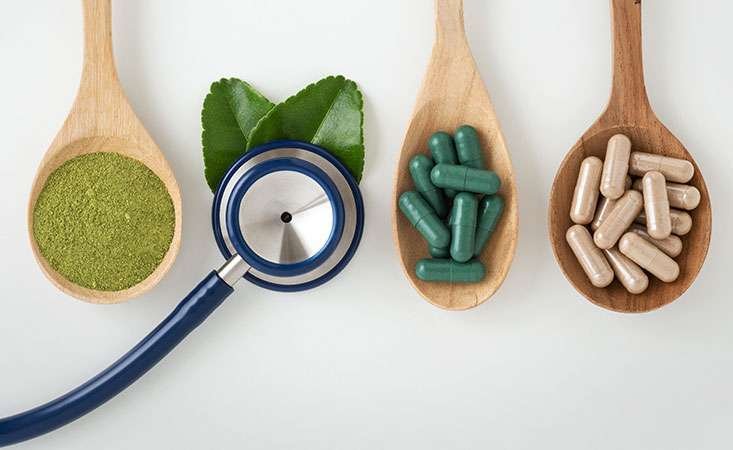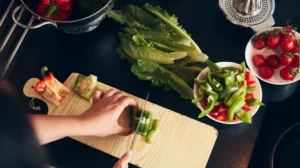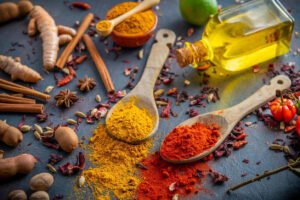Not only can herbs and spices add flavour and color, they are also packed with health-promoting properties. As low-calorie sources of essential vitamins and minerals, herbs and spices provide an invaluable way to stay nourished!
Oregano leaves may help reduce inflammation, protect the heart, and boost immunity, while lavender – another mint family herb – may ease anxiety and promote restful nights’ sleep.
1. Eat the Leaves
Plant leaves contain many health-promoting compounds and offer numerous health-promoting properties. Chamomile flowers act as gentle sedatives while studies demonstrate peppermint oil’s potential to ease symptoms of IBS.
Leafy greens are full of Vitamin K, an essential nutrient for blood clotting and helping prevent osteoporosis. When adding fresh herbs like parsley or dill to soups and salads for flavor without extra fat and sodium content. Try creating bouquet garni by tying chopped herbs together into little muslin bags that can then be placed inside dishes but removed later before being served to your guests.
2. Eat the Flowers
Many flowers, such as chives, lavender and roses are edible and make delicious additions to salads, soups and other savory dishes as well as providing beautiful accents to garnish them.
Lemon balm (Monarda didyma) flowers share its lemony fragrance and taste with its leaves to enhance herbal tea blends. This perennial is easy to grow in both sunny gardens and containers.
Note that certain plants produce natural toxins to deter insect and animal damage; it’s essential to know which ones are suitable for human consumption. In general, anything that looks poisonous or could irritate your skin should be avoided.
3. Drink the Water
Water is an indispensable element of daily life, yet it can sometimes feel monotonous and boring. By adding fruits and vegetables to your water source, it is easy to add exciting flavor while providing essential nutritional support.
Sage (Salvia officinalis) can serve as an anti-inflammatory, memory booster and pain reliever; bay leaves (Laurus nobilis) have antimicrobial, antifungal and antioxidant properties.
Cardamom (Saponaria officinalis), an herb from the ginger family originating in its seeds, helps combat bad breath and cavities while simultaneously lowering blood pressure levels and alleviating diabetes symptoms.
4. Eat the Fruits
Herbal medicines offer an all-natural alternative to pharmaceutical medications; they treat the causes rather than mask symptoms, and promote overall wellness.
Examples of herbal treatments for insomnia, stomach lining bleeding prevention when taking aspirin and heart health promotion include Chamomile flowers for insomnia; Meadowsweet for stomach protection when taking aspirin; and garlic as a heart health aid are among many of them – non-toxic alternatives that are safer than many pharmaceutical medications.
Make an effort to consume 10-14 servings of plant foods each day, including dark leafy veggies (such as kale and spinach), fruits, coffee, nuts, berries spices whole grains as well as various vegetables from each color group.
5. Make a Tea
Many herbs contain properties that can treat or prevent specific health conditions. Meadowsweet leaf extract contains salicylic acid which has anti-pain benefits; however, practitioners of herbal medicine believe the impact of an herb extends beyond just its individual active ingredient.
Dried herbs offer more intense flavors than fresh, and you can create customized tea blends suited to your own preferences. When using fresh herbs, make your brew either in the morning or evening to ensure optimal flavor extraction and use only healthy leaves and flowers without damaged or brown patches.
6. Make a Salad
A fresh green salad makes an excellent base for other foods. Add fruits or vegetables (like avocado, tomatoes & cranberries ) as well as protein from cheese, fish or lean meat before finishing it off with some dollop of dressing for moisture and some crunch from nuts or seeds for crunchiness.
Fresh herbs add flavor without adding fats or salts, and are full of health-promoting properties, such as the antioxidant rosmarinic acid found in sage. Other parts of plants, known as spices, such as barks (cinnamon), berries, or seeds are considered spices as well.
7. Make a Dressing
Herbs add flavor without fat, salt or sugar being required, while at the same time providing health-promoting properties.
Since herbs tend to add subtle flavouring, it is best to incorporate them at the very end of cooking or when ready to serve. Or create a bouquet garni by tying chopped herbs together in muslin before adding them directly into your recipe and remove before serving.
Create an effortless herb salad dressing from herbs found in your garden or windowsill.
8. Make a Tea Mix
Herbalists refer to the process of formulating tea blends as “formulation.” Formulation can be an enjoyable and creative way to work with measurements – especially for those who enjoy creating new blends!
Start with a base ingredient; this will create the essence of your tea blend.
Add supportive herbs like calendula or rose hips to help reduce stress and strengthen immune function, while catalyst herbs such as fennel seed or ginger root may soothe an upset stomach.
Use a ratio of 1 part base ingredient, 1/2 part supportive herb and 1/4 part catalyst herb in a glass jar, mixing well by gently shaking!
9. Make a Salad Mix
Though Homer and Bart may view salad as an unappetizing mush of crunchless veggies inundated with an inedible dressing, when properly made it can be deliciously nutritious and enjoyable!
Try mesclun greens (a blend of young spring varieties like arugula, chicory, chervil and mache) as an easy and tasty appetizer or side dish for your next event. Add herbs like cilantro, parsley or basil for added brightness!
Add protein sources for added nutrition. Grilled chicken breast, air fryer shrimp or bacon can all make tasty choices; baked croutons are quick and simple. A single cup of beans provides 15 g of protein.
10. Make a Sauce
Herbs add flavor and color without adding fat or salt, as well as providing many essential nutrients and antioxidants to improve health.
Companion planting helps herbs achieve maximum performance. For instance, basil enhances tomato flavor and growth as well as drawing pollinators attention; additionally it can protect from squash beetles and nematodes that could threaten both plants’ wellbeing.
Not all herbs make good companions; for example, fennel emits chemicals which inhibit other plants nearby from growing, while cilantro and tarragon require different growing conditions and should therefore be planted separately in separate containers.



